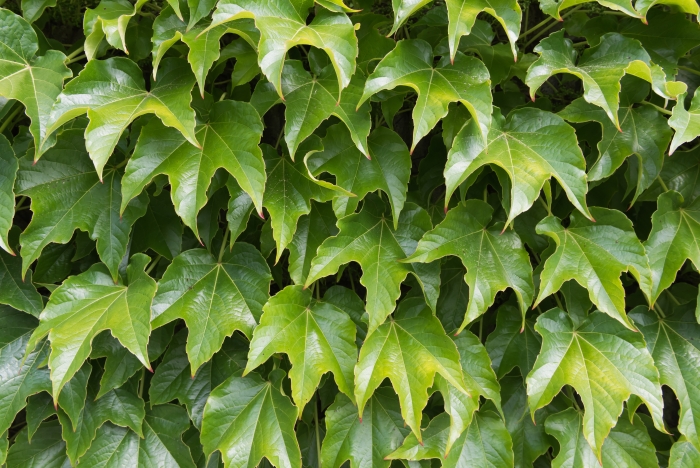Boston Ivy
(Parthenocissus tricuspidata)
Boston Ivy (Parthenocissus tricuspidata)
/
/

Johann Jaritz
CC BY-SA 4.0















































































Estimated Native Range
Summary
Boston Ivy thrives in full sun to part shade and prefers moist, well-drained soils. It is often used to cover walls, trellises, and other structures in urban and garden settings. While it is low-maintenance and can reduce cooling costs by shading walls, it can also cause damage if removed improperly. It is important to manage its growth to prevent it from covering windows, gutters, and rooflines. Boston Ivy can be invasive outside its native range, so it should be planted with caution.CC BY-SA 4.0
Plant Description
- Plant Type: Vine
- Height: 30-50 feet
- Width: 5-10 feet
- Growth Rate: Rapid
- Flower Color: N/A
- Flowering Season: Summer
- Leaf Retention: Deciduous
Growth Requirements
- Sun: Full Sun, Part Shade
- Water: Medium
- Drainage: Fast, Medium
Common Uses
Bee Garden, Bird Garden, Border Plant, Butterfly Garden, Deer Resistant, Erosion Control, Low Maintenance, Salt Tolerant, Street Planting
Natural Habitat
Woodland edges and forest clearings
Other Names
Common Names: Boston-Ivy , Grape Ivy , Japanese-Creeper , Japanese-Ivy , Japanese Creeper , Japanese Ivy , Woodbine , Dreilappige Jungfernrebe , Dreilappiger Wilder Wein , Vigne Vierge De Veitch
Scientific Names: Parthenocissus tricuspidata , Cissus tricuspidata , Acer nikoense , Ampelopsis tricuspidata , Parthenocissus veitchii , Ampelopsis veitchii , Vitis thunbergii , Vitis inconstans , Parthenocissus thunbergii , Parthenocissus tricuspidata f. veitchii
GBIF Accepted Name: Parthenocissus tricuspidata (Siebold & Zucc.) Planch.